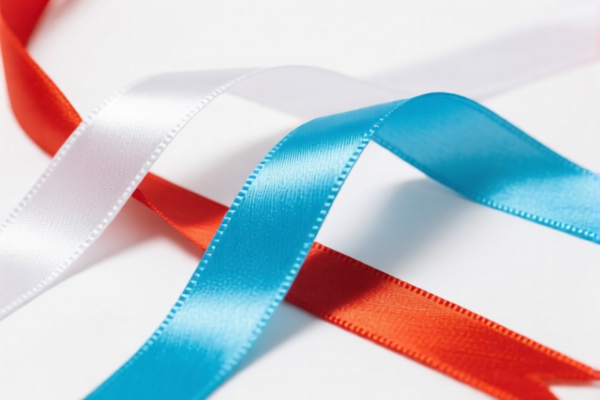| HS Code | Official Doc | Tariff Rate | Origin | Destination | Effective Date |
|---|---|---|---|---|---|
| 4201006000 | Doc | 57.8% | CN | US | 2025-05-12 |
| 4201003000 | Doc | 57.4% | CN | US | 2025-05-12 |
| 4203300000 | Doc | 57.7% | CN | US | 2025-05-12 |
| 6812911000 | Doc | 63.3% | CN | US | 2025-05-12 |
| 6812919000 | Doc | 55.0% | CN | US | 2025-05-12 |
| 6811899000 | Doc | 55.0% | CN | US | 2025-05-12 |
| 6811891000 | Doc | 55.0% | CN | US | 2025-05-12 |
| 6813890050 | Doc | 55.0% | CN | US | 2025-05-12 |
| 6813810050 | Doc | 55.0% | CN | US | 2025-05-12 |
| 6815910011 | Doc | 55.0% | CN | US | 2025-05-12 |
| 6815910071 | Doc | 55.0% | CN | US | 2025-05-12 |
| 3926905500 | Doc | 60.1% | CN | US | 2025-05-12 |
| 3926906090 | Doc | 59.2% | CN | US | 2025-05-12 |
| 3919905060 | Doc | 60.8% | CN | US | 2025-05-12 |
| 3919905030 | Doc | 60.8% | CN | US | 2025-05-12 |
| 6114909070 | Doc | 35.6% | CN | US | 2025-05-12 |




Anti-Slip Belt
An anti-slip belt is a specialized type of belt designed to provide enhanced friction and prevent slippage, typically used in conjunction with rotating machinery or to improve grip during physical activities.
Material
Anti-slip belts are constructed from a variety of materials chosen for their frictional properties and durability. Common materials include:
- Rubber: Natural or synthetic rubber compounds (e.g., neoprene, EPDM) are frequently used due to their high coefficient of friction and flexibility.
- Polyurethane: Offers excellent abrasion resistance and high tensile strength, suitable for high-load applications.
- Polyester/Nylon with Rubber Coating: Provides a combination of strength and grip. The fabric core provides tensile strength while the rubber coating delivers friction.
- Aramid Fibers (e.g., Kevlar): Used in high-performance applications requiring extreme strength and heat resistance.
- PVC (Polyvinyl Chloride): Can be used for lighter-duty applications.
Purpose
The primary purpose of an anti-slip belt is to transfer rotational power efficiently and reliably without slippage. This is crucial for maintaining consistent speed and preventing energy loss. Beyond power transmission, they enhance safety by improving grip.
Function
Anti-slip belts function by increasing the friction between the driving and driven components. This is achieved through:
- High Friction Coefficient: The belt material is selected for its inherent ability to create a strong frictional force.
- Surface Texture: Many anti-slip belts feature textured surfaces (e.g., cogs, grooves, raised patterns) to interlock with the pulleys or components they engage with.
- Tension: Proper belt tension is critical. Sufficient tension increases the normal force between the belt and the components, enhancing friction.
- Conforming Fit: The belt needs to fit snugly around the pulleys or components to maximize contact area and friction.
Usage Scenarios
- Industrial Machinery: Used in power transmission systems for conveyors, pumps, compressors, and other rotating equipment.
- Fitness Equipment: Found in treadmills, elliptical trainers, and other exercise machines to drive the running surface.
- Automotive: Used in serpentine belts, timing belts, and accessory drive belts.
- Household Appliances: Used in washing machines, dryers, and other appliances to drive drums or other components.
- Manual Tools: Some hand tools utilize anti-slip belts for power transmission (e.g., belt sanders).
- Robotics: Used in robotic arms and other mechanisms for precise movement.
Common Types
- V-Belts: A classic design with a trapezoidal cross-section. Provide good friction and power transmission capabilities. Variations include narrow V-belts and cogged V-belts.
- Serpentine Belts: A single, long belt used to drive multiple accessories in automotive engines.
- Timing Belts: Precisely designed belts with teeth that synchronize the rotation of engine components (e.g., crankshaft and camshaft).
- Flat Belts: Simple belts used for lighter-duty applications.
- Cogged Belts: Feature molded cogs on the underside of the belt to improve flexibility and heat dissipation.
- Banded Belts: Multiple belts joined together to increase power transmission capacity and reduce slippage.
- Specialty Belts: Designed for specific applications, such as urethane belts for food processing or high-temperature belts for industrial ovens.
Based on the provided information, the following HS codes may be relevant to “anti slip belt”:
- 3926905500: Other articles of plastics and articles of other materials of headings 3901 to 3914: Other: Belting and belts, for machinery: Containing textile fibers: V-belts. This code covers belting and belts for machinery made of plastics or other materials, specifically those containing textile fibers and identified as V-belts.
- 3926906090: Other articles of plastics and articles of other materials of headings 3901 to 3914: Other: Belting and belts, for machinery: Other Other. This code also covers belting and belts for machinery made of plastics or other materials, but for types other than those containing textile fibers or specifically identified as V-belts.
- 6813890050: Friction material and articles thereof (for example, sheets, rolls, strips, segments, discs, washers, pads), not mounted, for brakes, for clutches or the like, with a basis of asbestos, of other mineral substances or of cellulose, whether or not combined with textile or other materials: Not containing asbestos: Other Other. This code covers friction materials used in belts, not mounted, and made without asbestos.
Regarding HS code 3926905500 and 3926906090, the material composition of the belt is important for classification. If the belt contains textile fibers, 3926905500 is more appropriate; otherwise, 3926906090 should be considered.
Regarding HS code 6813890050, if the anti-slip function is achieved through a friction material layer, this code may be applicable. However, it is important to confirm that the material does not contain asbestos.
Customer Reviews
No reviews yet.